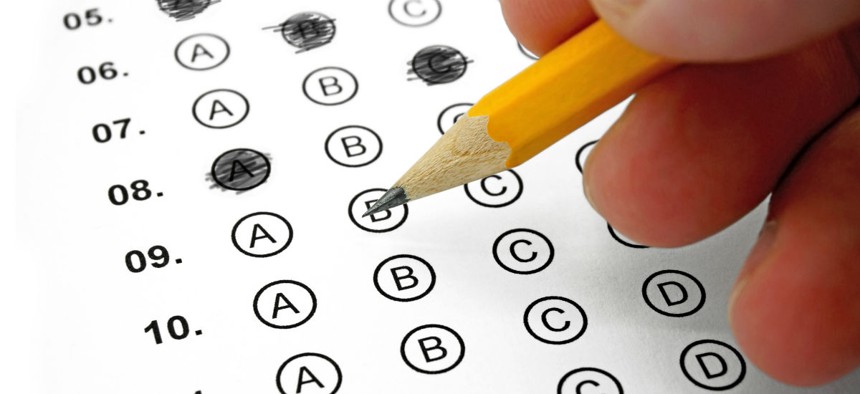
When Performance Measures are Counter-Productive
Different measures create different incentives.
One reason to measure performance is to evaluate the effectiveness of organizations and of people. But this is not the only purpose. In fact, I think that there are multiple answers to the question: “Why measure performance?” And one of these purposes is to motivate organizations and people.
It might not seem that these two purposes are in conflict. After all, we want to motivate people to accomplish what we want to evaluate. Still, any effort to measure performance ought to come with a big, flashing warning sign: A measure that works well for one purpose, might not work so well for other purposes.
Consider the challenge of both motivating and evaluating the performance of school districts, schools, and even individual teachers: If we create a measure for evaluative purposes, will this simultaneously accomplish our motivational purposes? Maybe. Maybe not.
To evaluate students’ learning (and thus to evaluate teachers’ teaching), we usually create a test that covers what we want students to learn.
We cannot, however, require students to spend too much time taking tests. Thus, no test can cover everything we want students to learn. So we have to focus a test on the most important ideas, concepts, and skills. Thus, the test creates incentives for students to focus on these essentials. This test also creates incentives for teachers to focus on these essentials. Because they are human, they will teach to the test. (Surprise?)
What about the school principals and the school superintendents? Do they teach to the test? That depends upon what they think is their “test.”
In the United States, many superintendents and principals get their annual test scores published in the local newspaper—some number between zero and 100. Their professional and personal score is the percentage of the students in their district or school that passed the annual test.
Very simple. Very straightforward. Very visible. Very little ambiguity.
What, however, is the motivational impact of this performance measure on the principals and superintendents? That may depend upon the nature of the school or district. Consider, for example, two situations.
If you are the principal or superintendent in a district with parents who have never graduated from high school and who are struggling economically, you face a significant challenge. You know that, this year (like last year and next year) you won’t have a 95 percent pass rate. You might be lucky to get a 70 percent pass rate.
For you, what is success? No one will be surprised at your score. No one will say it is totally your fault. And whether your score went up by a few percentage points (or down by a few), you won’t get too much credit or too much blame. Small annual changes are just part of the noise.
So, how should we evaluate—and motivate—these public executives?
First: I would establish a definition of success that is clearly not perfection. For example: The standard could be a 95 percent pass rate.
Second: Each school and district would have a target of closing the gap between its last year’s score and the 95 percent standard. For example: Close the gap by 10 percent.
No school system can jump to the top of the performance mountain in one year. So let’s not create unrealistic expectations. Instead, let’s give superintendents, principles, and teachers something doable to accomplish. Let’s ask them to focus on ratcheting up performance to the next level.
For example, if a district had a pass rate last year of 75 percent, its target for this year would be 77 percent. If a school had a pass rate last year of 55 percent, its target this year would be 59 percent. Just close the gap by 10%.
This means that the definition of success is making steady progress towards the standard. Instantaneous success is impossible. So let’s not make it even the implicit standard.
Instead, this definition of success gives superintendents, principals, and teachers an incentive to develop a long-term strategy for getting their schools up to the standard.
In wealthier towns, principals and superintendents face a different situation. The implicit comparison is with other similarly wealthy towns. And if neighboring school districts have a 97 percent pass rate, no self-respecting principal or superintendent can afford to be at 95 percent.
Thus, they shift resources from band, art, and other such “frills” to focus on getting the last few students into the pass category. Of course, the law of diminishing marginal returns means that getting these last few students to pass has some big opportunity costs for the other students. No wonder their parents complain.
So rather than using performance measures that create counter-productive competition, accept that not every student will pass the exam every year, and thus accept that a perfectly reasonable passing rate is 95 percent.
Robert D. Behn, a lecturer at Harvard University's John F. Kennedy School of Government, chairs the executive education program Driving Government Performance: Leadership Strategies that Produce Results. His book, The PerformanceStat Potential, was published by Brookings. (Copyright 2016 Robert D. Behn)






